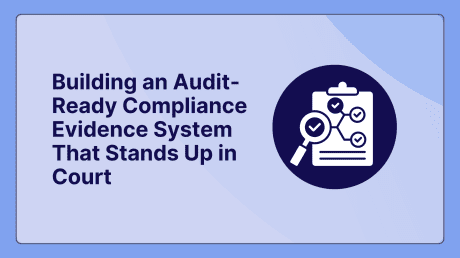
What’s Trending in Compliance? May 2025

This blog was originally posted on 26th May, 2025. Further regulatory developments may have occurred after publication. To keep up-to-date with the latest compliance news, sign up to our newsletter.
At Compliance & Risks we help manufacturers, retailers and their supply chain partners to monitor and manage global regulations via C2P, our compliance knowledge management platform.
We break down some of the top compliance trends in May 2025 that are generating the most interest globally this month.
1. EU: Ecodesign for Sustainable Products and Energy Labeling Working Plan 2025-2030, Communication, April 2025
On 16 April 2025, the EU Commission published the ESPR Working Plan. This plan sets out a list of priority products for which ecodesign and energy labeling requirements should be introduced over the next five years. Such priority products include textiles (focused on apparel), furniture, tires, mattresses, steel and aluminum.
The Commission also plans to adopt horizontal measures to regulate repairability requirements for various products (e.g., consumer electronics and small household appliances).
As set out in the Communication from the Commission, ecodesign and energy labeling requirements will be set forth in delegated acts which will concern specific products or groups of similar products. Adoption of these acts will be based on preparatory studies and impact assessments, and stakeholders will be involved throughout the process.
2. EU: Implementation of the Reporting Requirements of the REACH Restriction on Microplastics, Guidance Document, April 2025
This Guidance Document, published on 16 April 2025 by the European Chemicals Agency (ECHA), relates to the implementation of the reporting requirements of the restriction on microplastics, set out in Entry 78 of Annex XVII of the EU REACH Regulation. The reporting requirements concern estimated annual emissions of synthetic polymer microparticles (“SPM”) to the environment and apply to manufacturers, industrial downstream users and suppliers placing SPM on the market for the first time.
In order to ensure optimal use of the reported information and to facilitate enforcement, the reporting information is made available to the Member States by ECHA.
This Guidance Document outlines the legal definitions, reporting timelines and data that shall be submitted (including use descriptions; polymer identities, emission estimations, and relevant derogations). The Guidance also details the reporting process using the reporting tool (IUCLID), submission of dossiers via REACH-IT, etc.
3. Belgium: Guidance to Implement the Belgian Law on the Promotion of the Repairability and Lifespan of Goods, Frequently Asked Questions (FAQ) Document, April 2025
This FAQ provides practical guidance for businesses on how to implement Belgium’s new Repair Index Law, which aims to promote the repairability and longer lifespan of consumer goods. Its main objective is to clarify legal requirements and help stakeholders comply with the display and communication rules for the repairability index.
The Belgian Repair Index Law requires that, starting from 2 May 2025, certain household products sold in Belgium – specifically dishwashers, vacuum cleaners (excluding wet/central types), high-pressure cleaners, non-fuel lawn mowers, and laptops (excluding tablets, touchscreen models, and mobile thin clients) – must display a repairability score near the price, both in physical stores and online. This score is presented as a pictogram with a color code and a number out of ten, accompanied by a QR code (in-store) or clickable link (online) that leads to a detailed information sheet about the score.
Producers and importers are responsible for calculating and providing the repair index and the corresponding information sheet link to sellers and distributors, who must then display this information at the point of sale. Sellers and distributors are not liable if the producer or importer fails to provide the score; in such cases, they may display a greyed-out logo indicating the absence of information.
The law’s enforcement is phased, with inspections and sanctions beginning later for small businesses and sellers.
4. EU: Rules for the Calculation of the Carbon Footprint of Industrial Batteries Without External Storage (CFB-IND), Guidelines Document, 2025
Published in March 2025, this report sets out guidelines for calculating the Carbon Footprint of Industrial Batteries (CFB-IND), in line with the objectives of Article 7 of the EU Batteries Regulation (2023/1542). The report is based on the Environmental Footprint (EF) method developed by the EU Commission (Commission Recommendation (EU) 2021/2279), and the draft Delegated Act that defines the methodology for calculating the carbon footprint of electric vehicle batteries (draft DA-EV), as published in April 2024 for public consultation.
5. New Zealand: Minister Notification of Proposals to Undertake Consultation to Amend the Energy Efficiency (Energy Using Products) Regulations 2002, Consultation Document, April 2025
In April 2025, the New Zealand Minister for Energy published a notice outlining proposed changes to the energy efficiency standards for certain products. Product classes affected include external power supplies, distribution transformers, and three-phase cage induction motors. Comments on the proposal are accepted until 31 May 2025.
If the proposals are approved under the Equipment Energy Efficiency (E3) Programme and by the Cabinet, they will result in amendments to the New Zealand Energy Efficiency (Energy Using Products) Regulations 2002.
Unlock Market Access
The top compliance trends in May 2025 is based on the most viewed regulations on C2P this month. If you would like to see C2P in action, join us for a bite-sized high-level demo to witness the true power behind C2P.
Simplify Your Product Compliance Process with C2P
Design & build new products with full confidence you’ve met all compliance obligations.








